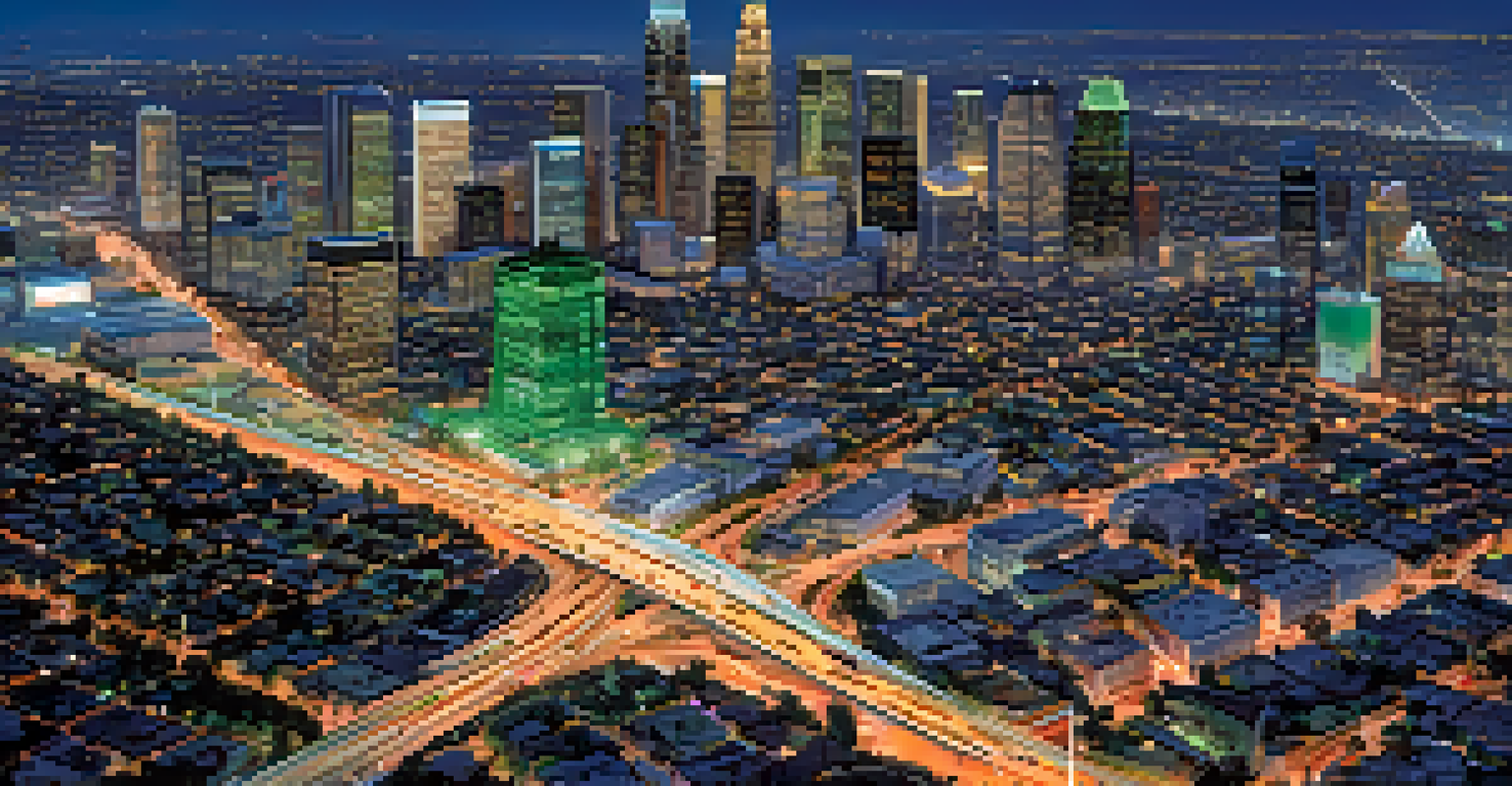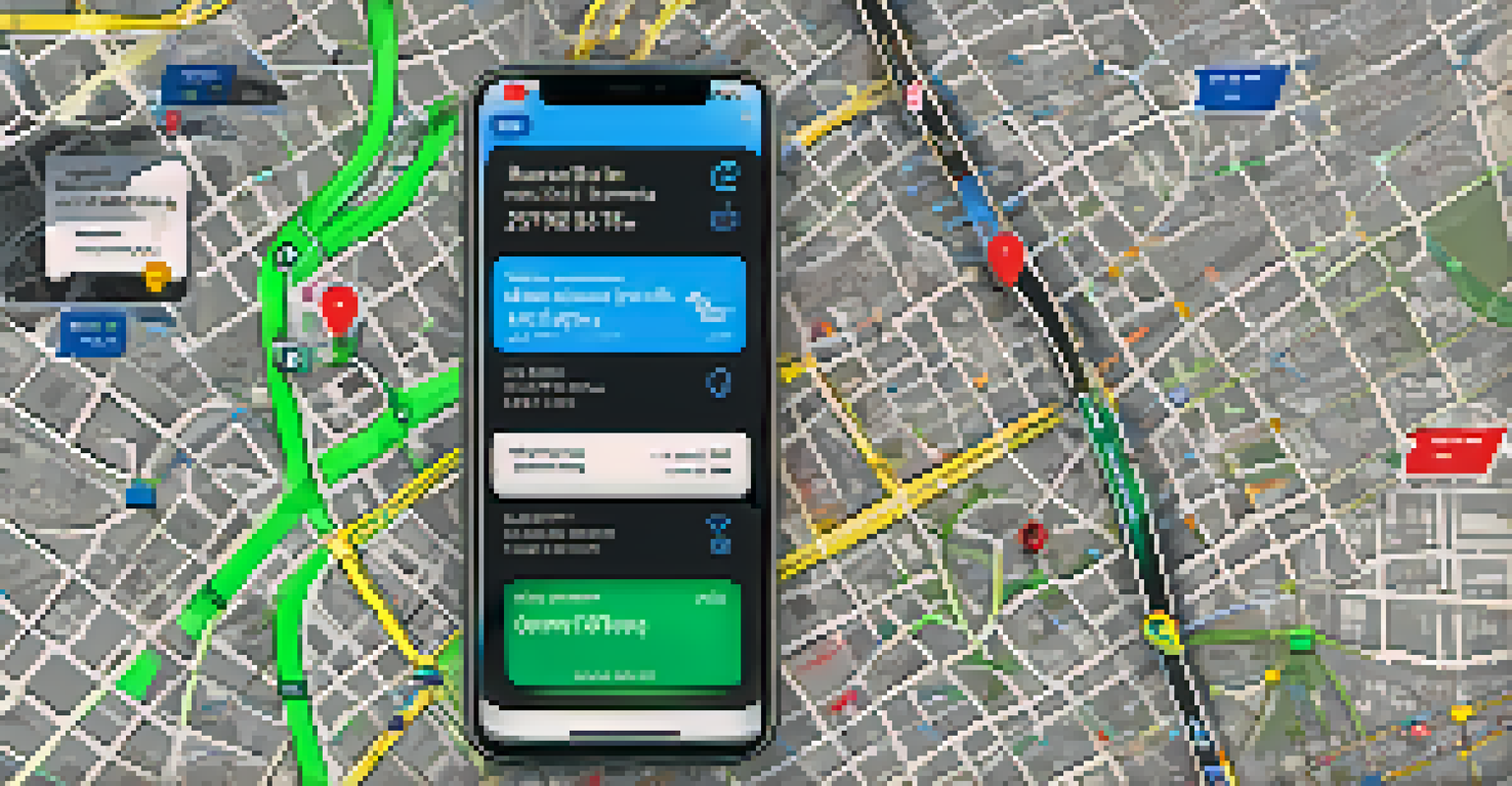Smart Traffic Management: Optimizing LA's Transit Systems

Introduction to Smart Traffic Management in Los Angeles
Los Angeles is known for its sprawling roads and notorious traffic jams, making smart traffic management a necessity. This approach utilizes technology and data to optimize traffic flow and enhance the overall transit experience. With innovations like real-time traffic monitoring and adaptive signal control, LA aims to reduce congestion and improve travel times.
Traffic congestion is not just a problem for drivers; it affects everyone in the city and the environment we live in.
The city is embracing a smart traffic management system that can adjust traffic signals based on real-time conditions. This means that instead of fixed signal timings, lights can change depending on the actual traffic volume. Imagine driving through LA and hitting green lights all the way; that’s the goal of these systems.
Moreover, smart traffic management not only focuses on cars but also considers pedestrians, cyclists, and public transit. By creating a holistic approach, LA seeks to promote safer, more efficient travel for everyone on the road.
The Role of Data in Traffic Management Solutions
Data is at the heart of smart traffic management, guiding decisions and strategies. Sensors and cameras are installed throughout the city to collect valuable information about traffic patterns, accident hotspots, and peak travel times. This data helps city planners understand where and when congestion occurs, leading to informed improvements.

For example, predictive analytics can forecast traffic conditions based on historical data, allowing for proactive measures. If a major event is happening, traffic signals can be adjusted in advance to accommodate increased vehicle flow. This level of foresight can significantly ease the burden on roadways.
Smart Traffic Reduces Congestion
Los Angeles is implementing smart traffic management systems that adapt signals in real-time to optimize vehicle flow and decrease wait times.
Furthermore, integrating data from various sources, including public transit systems and ride-sharing services, creates a comprehensive view of transportation dynamics. This interconnectedness is crucial for designing effective solutions that meet the diverse needs of LA's population.
Adaptive Traffic Signals: A Game Changer for LA
One of the most exciting developments in smart traffic management is the use of adaptive traffic signals. These signals can change in real-time based on current traffic conditions, improving the flow of vehicles and reducing wait times. Instead of a one-size-fits-all approach, LA’s traffic lights can now respond dynamically to what’s happening on the road.
The future of transportation is not just about cars; it’s about creating a seamless experience for all forms of mobility.
Imagine sitting at a red light with no cars coming from the other direction, only to wait unnecessarily. With adaptive signals, the light could turn green earlier, minimizing such frustrations. This technology not only improves efficiency but also enhances the overall driving experience.
Cities that have implemented adaptive traffic signals have reported significant reductions in congestion and travel times. By investing in this technology, LA aims to deliver a smoother transit system that benefits everyone, from commuters to delivery drivers.
Integration of Public Transit in Traffic Solutions
In Los Angeles, traffic management isn’t just about cars; it’s also about how to effectively integrate public transit. By synchronizing traffic signals with bus and train schedules, the city can ensure that public transportation runs smoothly and on time. This integration encourages more people to use transit, reducing the number of cars on the road.
For instance, when a bus approaches a traffic signal, the system can detect its arrival and change the light to green, allowing the bus to keep moving. This not only makes public transport more reliable but also enhances overall commuter satisfaction.
Data-Driven Traffic Solutions
The city utilizes data from sensors and predictive analytics to improve traffic management, helping to alleviate congestion during peak times and events.
Moreover, creating dedicated bus lanes and prioritizing transit vehicles in traffic flows can significantly improve public transit efficiency. As LA continues to expand its transit options, integrating these systems into traffic management will be key to promoting sustainable urban mobility.
Utilizing Mobile Apps for Real-Time Traffic Updates
Mobile apps are revolutionizing how commuters navigate Los Angeles. By providing real-time traffic updates and route suggestions, these apps empower drivers to make informed decisions on the go. Imagine getting an alert about heavy traffic ahead and being directed to an alternate route before you even hit the jam.
Additionally, these apps can offer insights into public transit options, helping users find the quickest way to their destination. With features like estimated arrival times and service alerts, commuters can plan their journeys more effectively and avoid unnecessary delays.
As more Angelenos adopt these technologies, the cumulative effect can lead to a reduction in overall traffic congestion. The convenience of accessing traffic information at your fingertips makes it easier to choose smarter travel options.
The Impact of Smart Traffic Management on Air Quality
One of the often-overlooked benefits of smart traffic management is its positive impact on air quality. By reducing congestion and improving traffic flow, these systems can lead to lower emissions from vehicles. This is particularly important for a city like Los Angeles, where air quality has been a longstanding concern.
When cars are stuck in traffic, they idle and emit more pollutants. However, with optimized traffic signals and better traffic distribution, vehicles can move more efficiently, resulting in cleaner air. This not only benefits the environment but also contributes to the health and well-being of LA residents.
Public Transit Integration Matters
By synchronizing traffic signals with public transit schedules, LA encourages the use of buses and trains, reducing the number of vehicles on the road.
Moreover, as the city promotes public transportation and encourages carpooling through these smart systems, it can significantly reduce the number of cars on the road. These combined efforts create a cleaner, healthier urban environment for everyone.
Challenges and Future of Smart Traffic Management in LA
While the future of smart traffic management in Los Angeles looks promising, there are challenges to address. Implementing these technologies requires significant investment, coordination among various city departments, and ongoing maintenance. Moreover, ensuring the privacy and security of data collected from users is a growing concern.
Additionally, public buy-in is crucial for the success of these initiatives. Educating residents about the benefits of smart traffic management and encouraging them to use available tools can help achieve desired outcomes. A well-informed public can make more effective use of the system and contribute to its success.

Looking ahead, as technology continues to evolve, LA has the opportunity to further enhance its traffic management strategies. Innovations like artificial intelligence and machine learning could play a pivotal role in optimizing transit systems, paving the way for a more connected and efficient city.